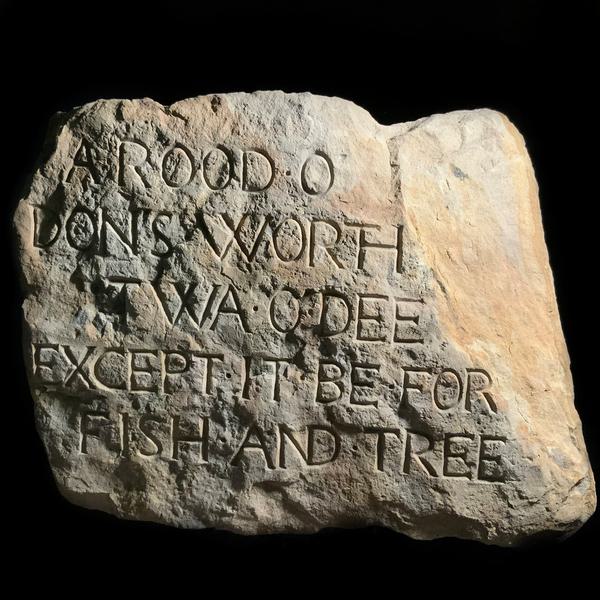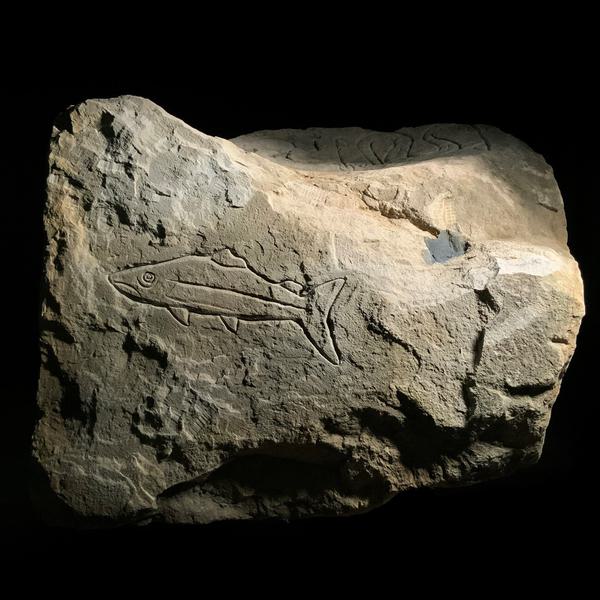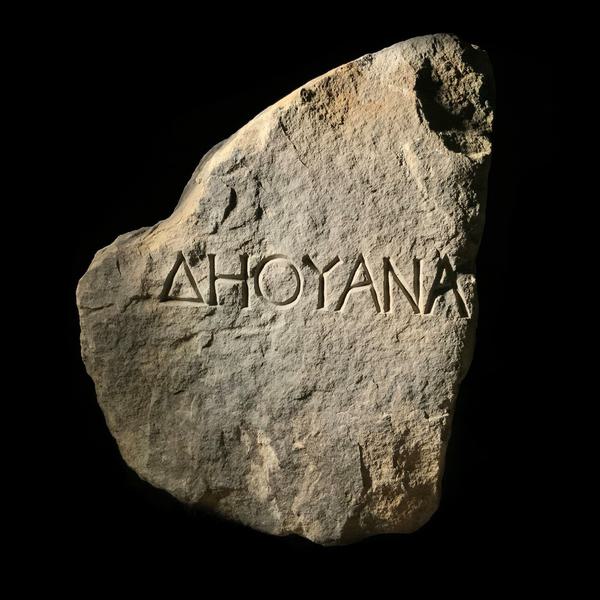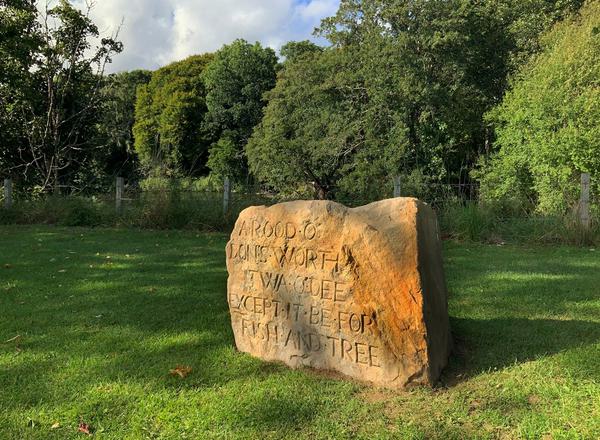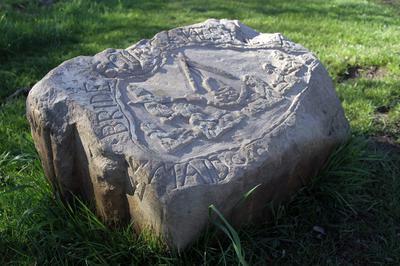The River Don Steen, The Kemnay Steens
By
James Winnett
2020
- Sculpture
- Participatory & Collaborative
- Urban Dynamics & Public Realm
- Stone Carving
- Sculpture
- Public Art
- Stone
- Aberdeenshire
- Scotland
- Folklore
- Commission
Dimensions
90 x 60 x 50
This stone can be found on the south bank of the River Don in Kemnay along a footpath that runs between Kembhill Park and the river. It carries a diverse range of carvings including the text of an old couplet comparing the merits of the Don and the Dee:
A ROOD OF DON'S WORTH TWA O' DEE,
EXCEPT IT BE FOR FISH AND TREE
The Don was said be more valuable and fertile than the Dee with a ‘rood’ being an old unit of measurement equal to 222 inches.
On the west face of the stone the Greek word ‘DEVONA’’ appears. The first potential historical reference to the river was in the second century AD when the geographer Ptolemy of Alexandria in Egypt used the term which can be translated as 'deity' or 'flow'.
The east face of the stone is carved with ‘DON’ in Greek alongside a carving reminiscent of a Romano-British dragonesque brooch. In Welsh mythology the name 'Dôn' refers to an ancient mother goddess, with old Welsh thought to be close linguistically to the Pictish language. In this context Dôn may be associated with the Celtic mother goddess Ana, also known as Danu, meaning 'to flow'. Early Christians transformed the goddesses Ana into Saint Anne the mother of Mary.
The top of the stone has a carving of a Pictish beast, a symbol of unknown meaning which occurs frequently on Pictish stones. Suggestions for what it might represent include a dolphin, an elephant, a dragonesque brooch or the 'each uisge' water spirit. Elephants were once washed in the Don when Bostock and Wombwell's circus came to Kemnay in the early part of the 20th century.
A carving of a cow may reference the source of the Don at Brown Cow Hill or perhaps the fords where cattle would once have crossed the river nearby. A Pictish-style snake also appears, its serpentine form reminiscent of the Don as it winds its way past Kemnay.
The north side of the stone features a carving of a salmon, an important Pictish symbol, similar to that seen on the Craw Stane at Rhynie. Recent research has suggested that the Picts avoided eating fish for cultural or spiritual reasons despite being able seafarers.
Helping Artists Keep Going
Axis is an artist-led charity supporting contemporary visual artists with resources, connection, and visibility.
